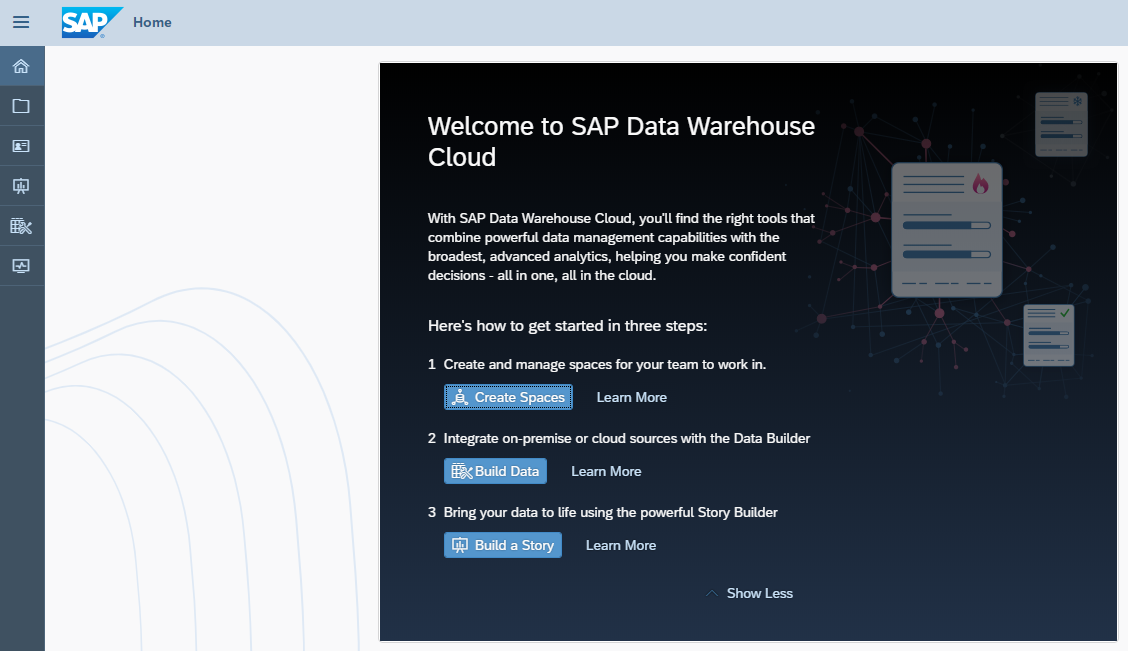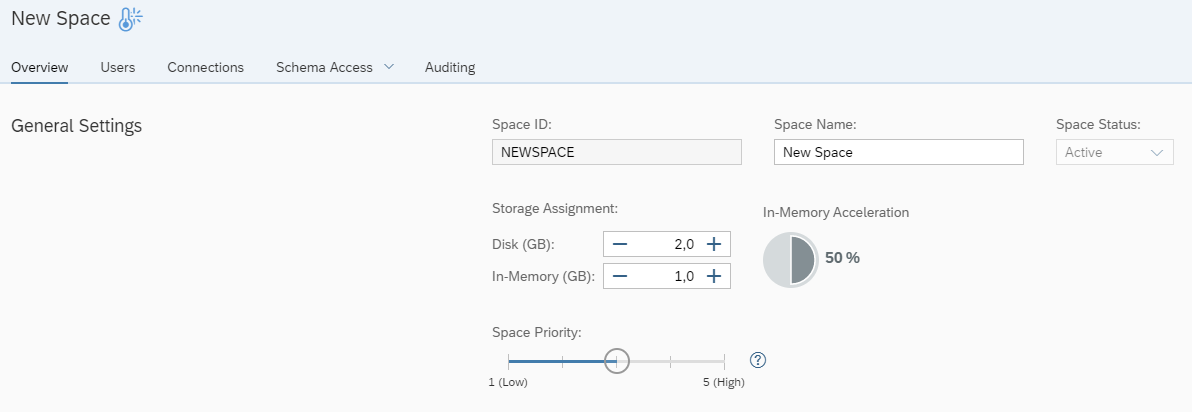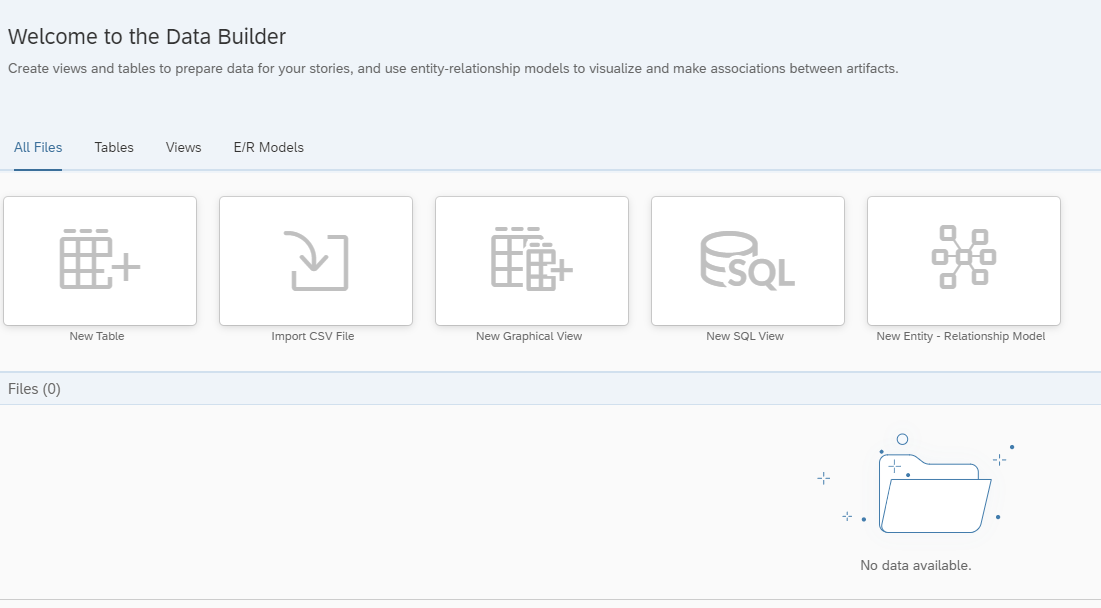Every company produces quantities of data that need to be used and managed sensibly. Due to the large amount of data, however, this is not so easy for many companies, because the data is complex and in most cases weakly structured. This is precisely why many companies are looking for a solution that combines all data in a central, consistent and complete database, and which can perform queries via a central user interface. At the same time, this solution should be designed to reduce costs, improve agility and increase efficiency. 
The SAP Data Warehouse Cloud
SAP offers such a solution: the SAP Data Warehouse Cloud solves many of the key challenges that companies face when managing data for reporting and analysis in modern data environments. With the SAP Data Warehouse Cloud, data from different sources – SAP and non-SAP – can be integrated and summarized and reports produced via ready-to-use adapters. The data is stored in predefined virtual folders (“Spaces”). This makes it possible to access the data from the underlying HANA database and link it to external data via the ready-to-use connectors for external sources. This enables companies to structure their information more efficiently and react faster to external events, or the market. By using “Spaces”, the SAP Data Warehouse Cloud improves collaboration between departments, regions, divisions or individual business users. The modeling of the data takes place in a business view and a semantic view, which in turn offers additional added value for companies.  Figure 2: Creating spaces in the SAP Data Warehouse Cloud Furthermore, local databases do not have to be moved to the cloud, and ‘live’ access to data is possible. The SAP Data Warehouse Cloud can not only be used as a stand-alone cloud tool, as it can also be integrated seamlessly into all on-premises systems (whether SAP or non-SAP).
Figure 2: Creating spaces in the SAP Data Warehouse Cloud Furthermore, local databases do not have to be moved to the cloud, and ‘live’ access to data is possible. The SAP Data Warehouse Cloud can not only be used as a stand-alone cloud tool, as it can also be integrated seamlessly into all on-premises systems (whether SAP or non-SAP).
Practical experience with the SAP Data Warehouse Cloud
At Camelot, we’ve already had the opportunity to test the SAP Data Warehouse Cloud and gain some initial practical experience with it. The user interface has a clear layout, is easy to use and, even after implementing the first models, appears very user-friendly overall. One positive aspect that is definitely worth mentioning are the various modeling options offered. The following approaches can be used: using drag and drop, the tables or views can be added and linked together using join operations. You can also perform complex joins and other mathematical operations and create simple relationships by dragging and dropping views and tables. As a result of this, the available data can be linked technically and logically. Decisions can therefore be made on the basis of large amounts of different information. In the SAP Data Warehouse Cloud, users can easily experiment without affecting the raw data and data sources.  Figure 3: Data Builder in the SAP Data Warehouse Cloud An additional advantage is the flexible scalability of hardware resources and data volumes. Depending on the situation and requirements, the amount of data, the utilization and the infrastructure required in the background can be adapted and aligned with needs. Resource scaling is an additional service offered by HANA Cloud Services. Thanks to the flexible scaling options, companies can always maintain an overview of their costs and can react quickly to changing requirements.
Figure 3: Data Builder in the SAP Data Warehouse Cloud An additional advantage is the flexible scalability of hardware resources and data volumes. Depending on the situation and requirements, the amount of data, the utilization and the infrastructure required in the background can be adapted and aligned with needs. Resource scaling is an additional service offered by HANA Cloud Services. Thanks to the flexible scaling options, companies can always maintain an overview of their costs and can react quickly to changing requirements.
Conclusion: efficiency and flexibility with the SAP Data Warehouse Cloud
Overall, the SAP Data Warehouse Cloud is a complete solution, which, first and foremost, allows companies to set up and operate data warehousing with fewer resources. This, in turn, allows them to focus more on adding value to their data and on their operational tasks. The SAP Data Warehouse Cloud also provides a user-friendly interface as well as interfaces to external data. This provides new opportunities and increased scope to analyze, summarize and report data. Companies can thus react faster and more flexibly to external requirements and events. Are you interested in using the SAP Data Warehouse Cloud? Then please feel free to contact us! The SAP Data Warehouse Cloud offers numerous flexible models for managing data, which can also be used by business users.
We would like to thank Biagio Clemente and Torben Hügens for their valuable contribution to this article.
